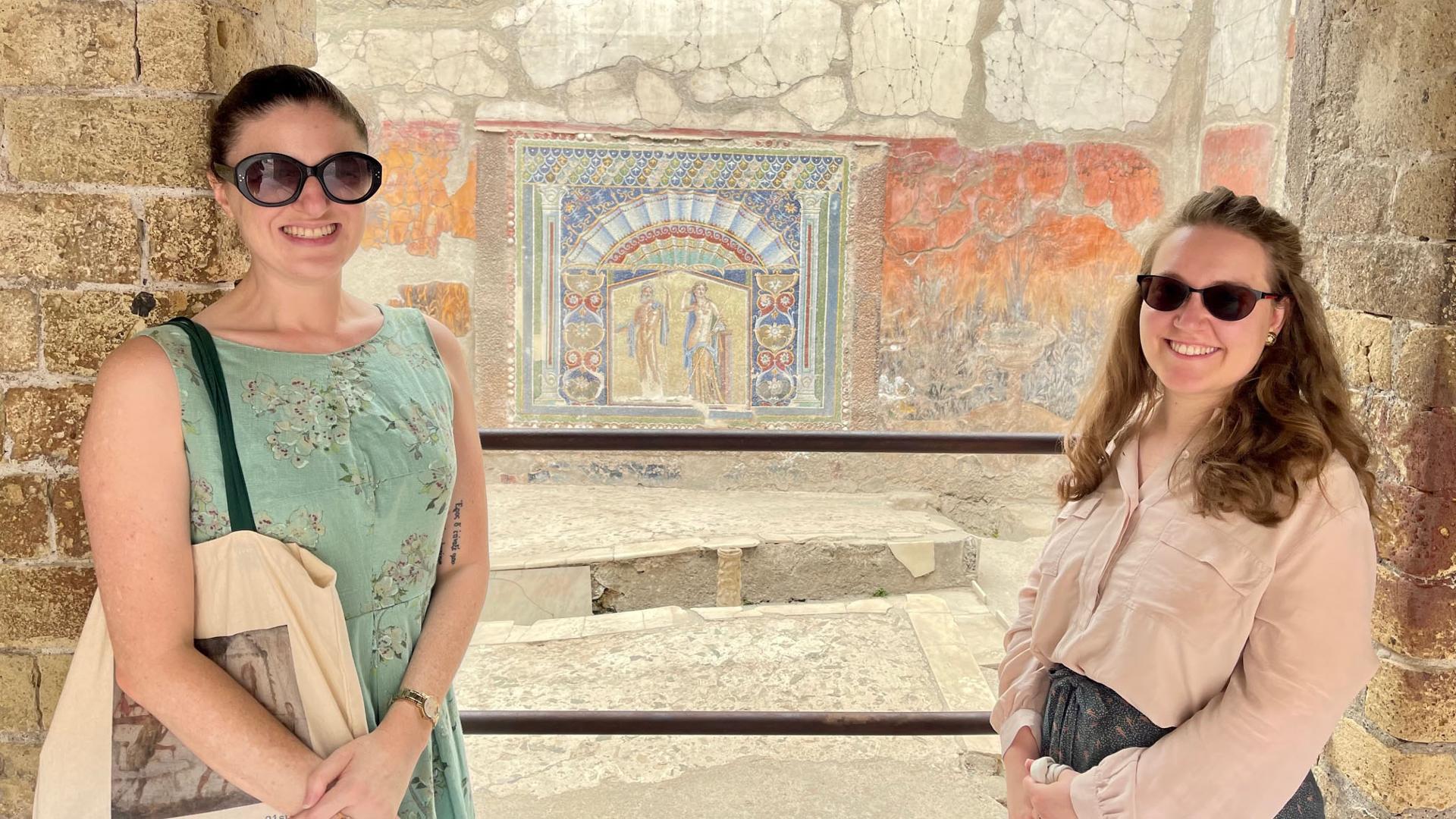
Fields of Study
African
Students interested in historical or contemporary arts of Africa work with Professor Susan Elizabeth Gagliardi. Students regularly attend the Institute of African Studies seminar, and they may also expand their knowledge of Africa through courses offered by other departments on campus, including Anthropology, History, English, French and Italian, and Spanish and Portuguese. Works by artists linked to the African continent in the collections of Emory’s Michael C. Carlos Museum and Atlanta’s High Museum of Art provide students with opportunities to investigate individual objects or consider methods of museum display.
Ancient Egypt, Greece, and Rome
Candidates who enter this field study the ancient art and architecture of Egypt, Greece, and Rome with Professors Rune Nyord, Bonna Wescoat, Renee Stein, and Eric Varner. The newly reinstalled and growing collections of Emory's Carlos Museum, adjacent to the Art History Department, strongly support this concentration and provide students with opportunities to become involved in organizing exhibitions and engaging in original research under the supervision of their advisors. Fieldwork is highly encouraged and supported with opportunities to participate in field research in the Sanctuary of the Great Gods on Samothrace, Greece, where Professor Wescoat is director.
Ancient Americas
Students interested in the art of the indigenous Americas work with Professor Megan O'Neil, who is also Faculty Curator of Art of the Americas at the Michael C. Carlos Museum. Over 2,500 original works of art are available for original research and museological applications in the collection. Textiles and feather work, metalwork, ceramics, stone sculpture (including jadeite and other greenstones), obsidian, bone, and wood are represented.
Doctoral supervision emphasizes Central and South American art over Mesoamerican, Emory being one of very few programs in the country with this focus. Elsewhere at Emory, complementary coursework can be completed in the departments of History, Spanish, and Anthropology, and in connection with the Latin American and Caribbean Studies program.
Medieval, Renaissance, and Baroque Europe
The four faculty members overseeing the study of art and architecture from the 11th through 18th century offer strong complementary emphases in materials, methods, cultures and chronological focus, including:
- Romanesque and Gothic art and architecture, especially French stained glass, hagiographical cycles, and monumental decorative arts such as the Bayeux Embroidery (Professor Elizabeth Pastan);
- late medieval and early Renaissance Art in Italy, poetic theory, imitative practice and the pictorial arts, and the literature of art history (Professor Jean Campbell);
- Baroque architecture and urbanism, sculpture, and cartography (Professor Sarah McPhee);
- and Northern art, art theory, visual poetics, and image-based theology (Professor Walter Melion).
We draw additional strength from course offerings in other departments and programs including History, Candler Theological Seminary and the Graduate Division of Religion, and French and Italian. The art history department enjoys very fine resources, including the rich collections of primary source material at Emory's Manuscript, Archives, and Rare Book Library and the Pitts Theology Library, and the Works on Paper Collection at the Michael C. Carlos Museum. Further, we participate in regular Medieval Studies Roundtables on campus, in the Sewanee Medieval Studies conference nearby, and offer our students frequent opportunities to study abroad, including programs in Leiden and Rome.
Our Andrew W. Mellon Graduate Fellowship Program in Object-Centered Curatorial Research allows our students hands-on experience with works of art on campus and at the High Museum of Art. Through the Lovis Corinth Endowment (focused on Dutch, Flemish and German Art), the Sawyer Faculty Seminar, exhibits and colloquia at the Carlos Museum, and other initiatives, the department engages with developments in the field, sponsors international symposia and works closely with European centers of scholarship.
Modern and Contemporary
Students interested in modern and contemporary European and American artwork with Professors Christina E. Crawford (Modern and Contemporary Architecture), Todd Cronan (Modern), and Lisa Lee (Contemporary). Students interested in African art from the nineteenth century to the present or from earlier periods work with Professor Susan Elizabeth Gagliardi.
Students in all of these fields are encouraged to develop their expertise and critical skills in collateral areas of the humanities as well as through regular participation in interdisciplinary seminars and other forums on campus. Collections, exhibitions, and programs at the High Museum of Art, Atlanta Contemporary Art Center, and Carlos Museum offer additional opportunities for intellectual exploration and professional development.
Western Architecture
Students interested in the history of western architecture may pursue this subject by studying with Professors Wescoat, Pastan, McPhee, and Crawford. Courses in CAD (Computer Aided Design) are taught in the department and geospatial, mapping, modeling classes taught in Environmental Sciences are also available to our students. Students are encouraged to take advantage of the Architectural Library and Lecture Series at nearby Georgia Tech.
During the summers there are opportunities for graduate students to serve as Teaching Assistants and Archaeological Assistants in departmental programs in France, Italy, Spain, and Greece, as well as internships closer to home at the Atlanta Preservation Center and at the Georgia Trust for Historic Preservation, among others.